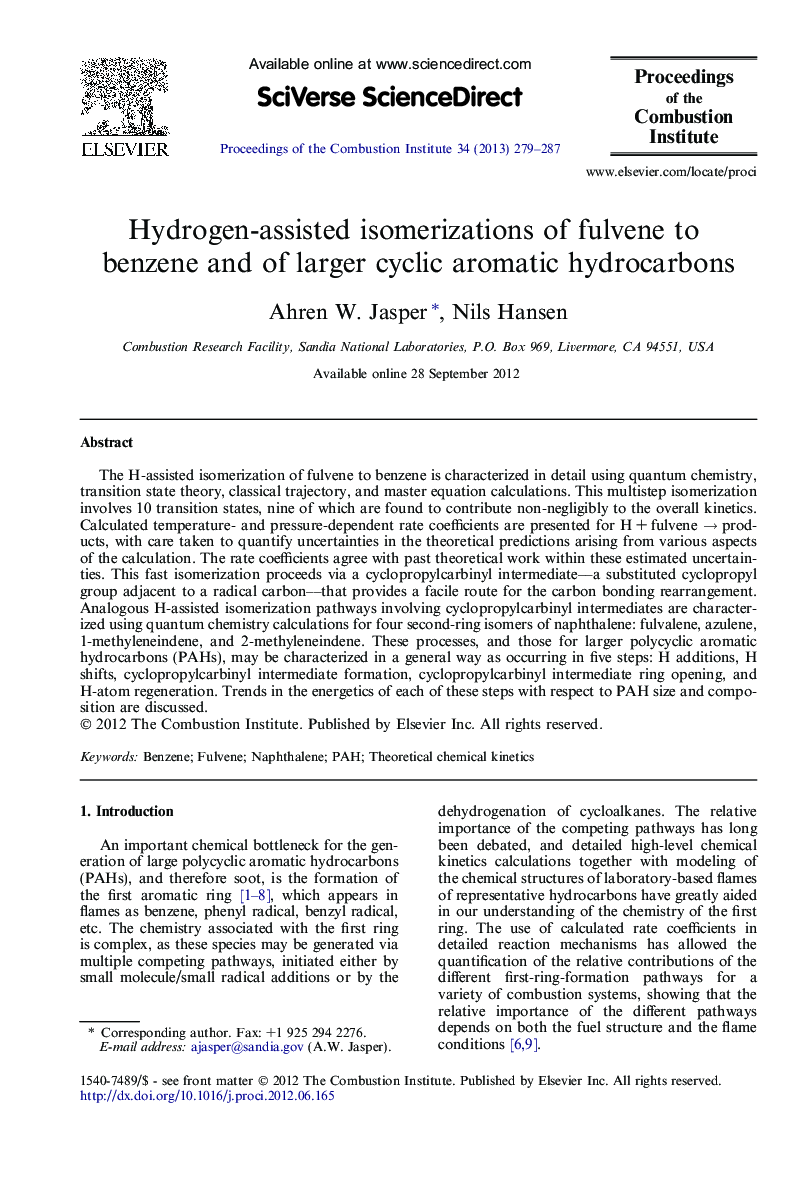| Article ID | Journal | Published Year | Pages | File Type |
|---|---|---|---|---|
| 241126 | Proceedings of the Combustion Institute | 2013 | 9 Pages |
The H-assisted isomerization of fulvene to benzene is characterized in detail using quantum chemistry, transition state theory, classical trajectory, and master equation calculations. This multistep isomerization involves 10 transition states, nine of which are found to contribute non-negligibly to the overall kinetics. Calculated temperature- and pressure-dependent rate coefficients are presented for H + fulvene →→ products, with care taken to quantify uncertainties in the theoretical predictions arising from various aspects of the calculation. The rate coefficients agree with past theoretical work within these estimated uncertainties. This fast isomerization proceeds via a cyclopropylcarbinyl intermediate––a substituted cyclopropyl group adjacent to a radical carbon––that provides a facile route for the carbon bonding rearrangement. Analogous H-assisted isomerization pathways involving cyclopropylcarbinyl intermediates are characterized using quantum chemistry calculations for four second-ring isomers of naphthalene: fulvalene, azulene, 1-methyleneindene, and 2-methyleneindene. These processes, and those for larger polycyclic aromatic hydrocarbons (PAHs), may be characterized in a general way as occurring in five steps: H additions, H shifts, cyclopropylcarbinyl intermediate formation, cyclopropylcarbinyl intermediate ring opening, and H-atom regeneration. Trends in the energetics of each of these steps with respect to PAH size and composition are discussed.
